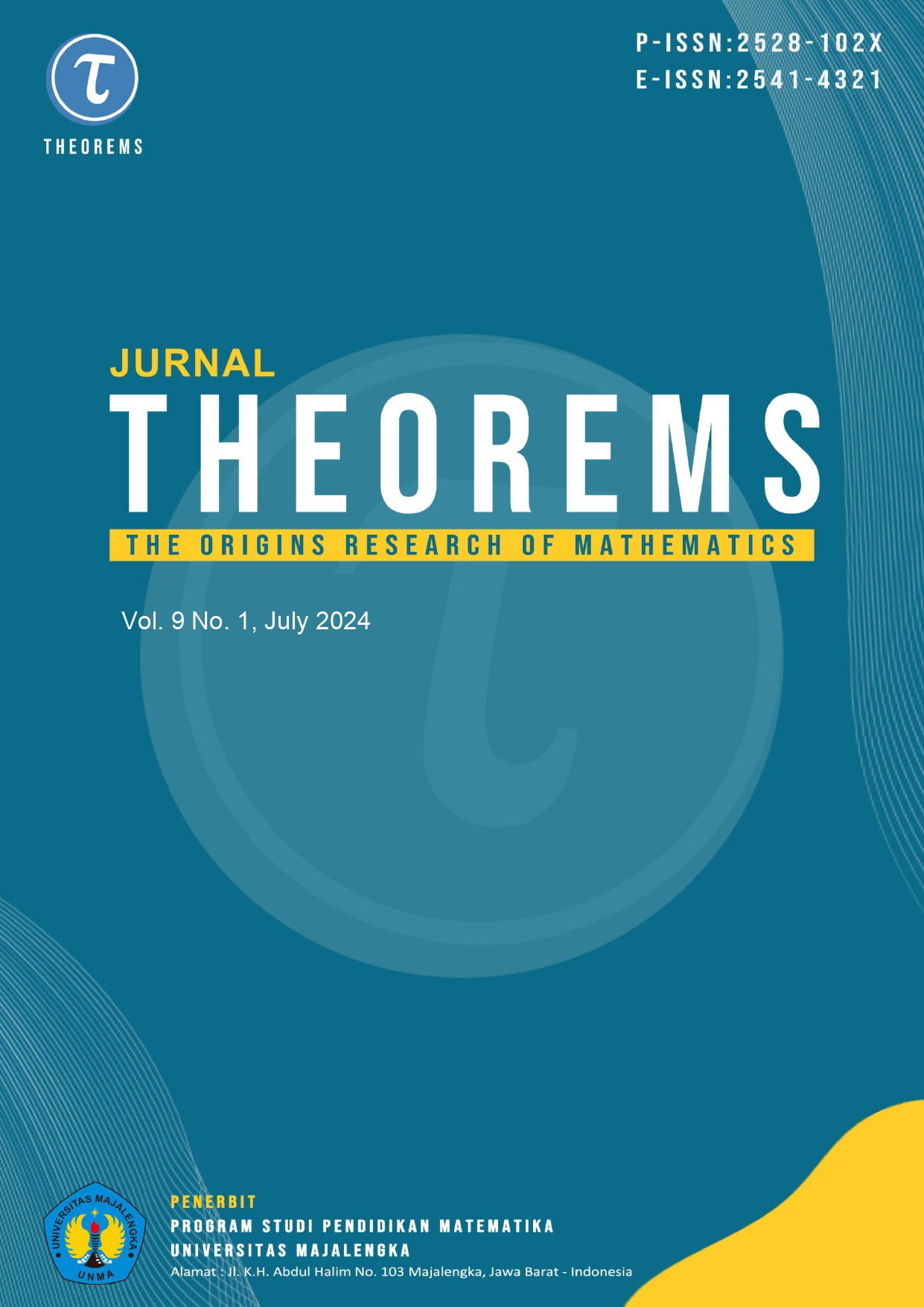Increasing students' mathematical creative thinking abilities through the discovery learning learning model
DOI:
https://doi.org/10.31949/th.v9i1.8784Abstract
Mathematics improves higher order thinking skills, especially creative thinking. Creative thinking involves logical and divergent thinking based on intuition. This allows students to solve problems through a variety of methods. However, traditional learning methods limit this ability. The Discovery Learning model that involves active student participation can improve these skills. This research aims to improve students' mathematical creative thinking abilities through the Discovery Learning model. The research method used is quantitative with Non-equivalent Control Group Design. The sample for this research was Class The experimental group received the Discovery Learning model, while the control group used conventional methods. Pretest and posttest data were analyzed using statistical tests including normality, homogeneity and T test. The experimental class used the Discovery Learning method, while the control class used conventional methods. The pretest and posttest results showed a significant improvement in the experimental group. The findings show that Discovery Learning increases creative thinking in mathematics.
Keywords:
Keywords: Learning motivation, mathematics learningDownloads
References
Akmalia, R., Ray, A. U. M., Pramudya, A., Azrohid, F., & Tanjung, L. A. (2023). Manajemen Peserta Didik dalam Meningkatkan Motivasi Belajar Siswa. Journal on Education, 5(3), 9225-9231.
Arsyad, Azhar. 2009. Media Pembelajaran. Jakarta: PT Raja Grafindo Persada.
Daimah, U. S., &; Suparni. (2023). Learning Mathematics in the Independent Curriculum in Preparing Students in the Era of Society 5.0
Davidovitch, N., & Dorot, R. (2023). The Effect of Motivation for Learning among High School Students and Undergraduate Students--A Comparative Study. International Education Studies, 16(2), 117-127
Dimyati dan Mudjiono. (2013). Belajar dan Pembelajaran. Jakarta: Rineka Cipta.
Eftafiyana, S., Nurjanah, S. A., Armania, M., Sugandi, A. I., & Fitriani, N. (2018). Hubungan antara kemampuan berpikir kreatif matematis dan motivasi belajar siswa smp yang menggunakan pendekatan creative problem solving. 2(2), 85–92.
Kustyamegasari, A., & Setyawan, A. (2020). Analisis Motivasi Belajar Siswa Dalam Pembelajaran Tematik Muatan Bahasa Indonesia Pada Siswa Kelas 3 Sdn Banyuajuh 6 Kamal
Manuhutu, ANALISIS MOTIVASI BELAJAR INTERNAL SISWA PROGRAM AKSELERASI KELAS VIII SMP NEGERI 6 AMBON (2015) JO - PROMOSI (Jurnal Pendidikan Ekonomi)
Muldayanti, N.D. 2013. Pembelajaran Biologi Model STAD Dan TGT Ditinjau Dari Keingintahuan dan Minat Belajar Siswa. Jurnal Pendidikan IPA Indonesia. Vol. 2 (1).
Nugraha, D. Y., Nugraha, D., & Widyastuti. (2021). The Correlation between Learning Motivation andLearning Outcomes on Mathematics Subjects in XII Science Class Senior High School 4 Bone. Anatolian Journal ofEducation, 6(1), 157-166.
Nafiah, A., & Munawir, M. (2022). Implementasi Metode Bahtsul Masail Terhadap Motivasi Belajar PAI. TA'DIBUNA: Jurnal Pendidikan Agama Islam, 5(1), 44-51.
Slameto. 2015. Belajar dan Faktor- Faktor Yang Mempengaruhi. Jakarta: Rineka Cipta.
Tarigan, N. R., Aulia, R., Saragih, M. S. I., & Nasution, F. (2023). Analisis Faktor Demotivasi Belajar Siswa Pasca Pandemi COVID-19. Jurnal Dirosah Islamiyah, 5(2), 466-471.
Yessenamanova, K., Arinova, B., Zhambylkyzy, M., Rakhimbayeva, R., & Zhunussova, D. (2022, July). Development of Acmeological Competence in Rising Social Teachers. In Frontiers in Education(Vol. 7, p. 901050). Frontiers.
Published
How to Cite
Issue
Section
License
Copyright (c) 2024 Elis Rosmawati, nia kania, iik nurhikmayati, Neneng Aminah

This work is licensed under a Creative Commons Attribution-ShareAlike 4.0 International License.








